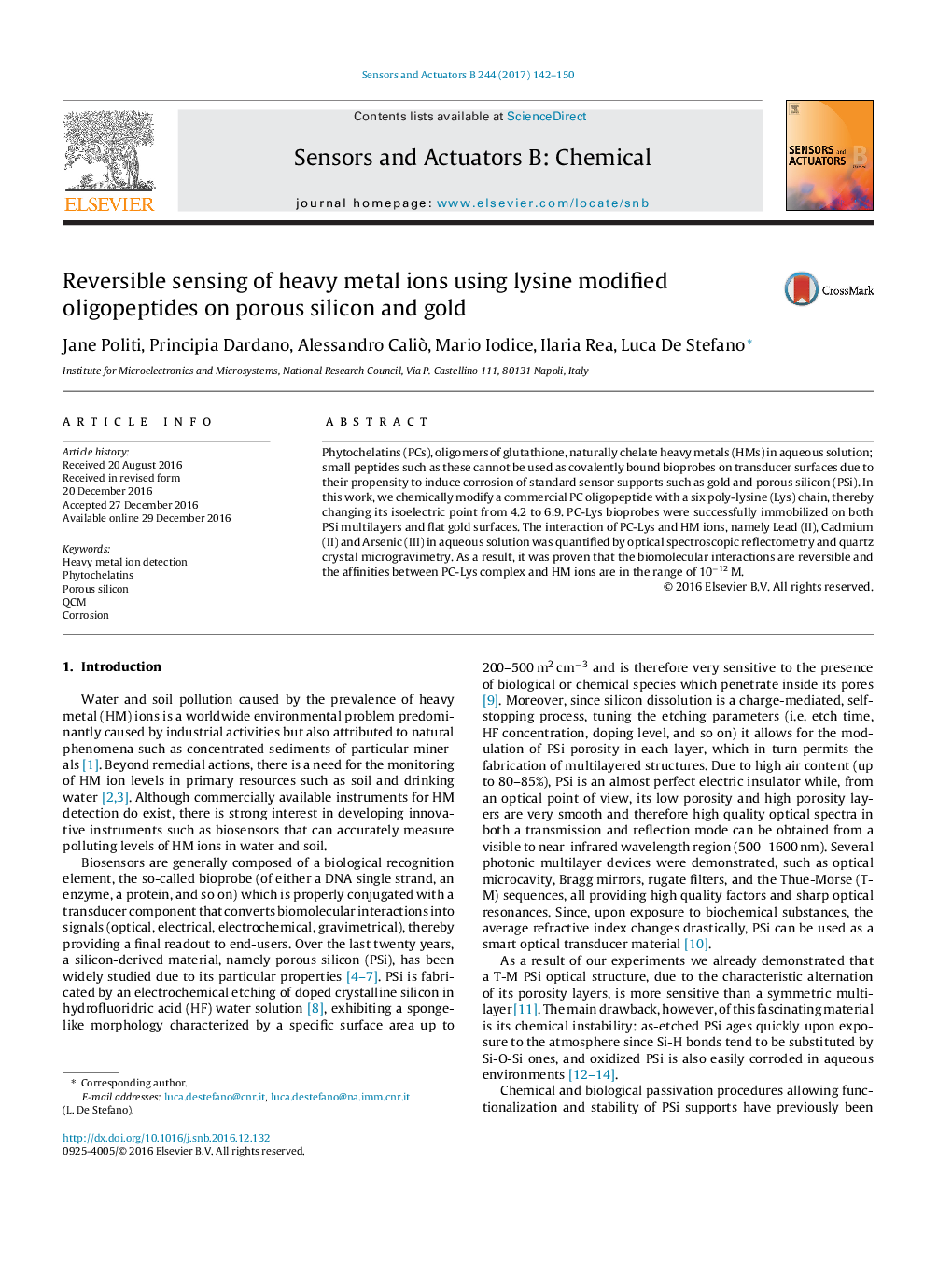| Article ID | Journal | Published Year | Pages | File Type |
|---|---|---|---|---|
| 5009973 | Sensors and Actuators B: Chemical | 2017 | 9 Pages |
â¢A commercial Phytochelatin oligomer is modified by Lysine chain for heavy metal ions detection.â¢The modified bioprobe is covalently attached to gold and porous silicon transducer surfaces.â¢Label-free detection of heavy metal ions in the range of ppb is demonstrated for both systems.
Phytochelatins (PCs), oligomers of glutathione, naturally chelate heavy metals (HMs) in aqueous solution; small peptides such as these cannot be used as covalently bound bioprobes on transducer surfaces due to their propensity to induce corrosion of standard sensor supports such as gold and porous silicon (PSi). In this work, we chemically modify a commercial PC oligopeptide with a six poly-lysine (Lys) chain, thereby changing its isoelectric point from 4.2 to 6.9. PC-Lys bioprobes were successfully immobilized on both PSi multilayers and flat gold surfaces. The interaction of PC-Lys and HM ions, namely Lead (II), Cadmium (II) and Arsenic (III) in aqueous solution was quantified by optical spectroscopic reflectometry and quartz crystal microgravimetry. As a result, it was proven that the biomolecular interactions are reversible and the affinities between PC-Lys complex and HM ions are in the range of 10â12Â M.
